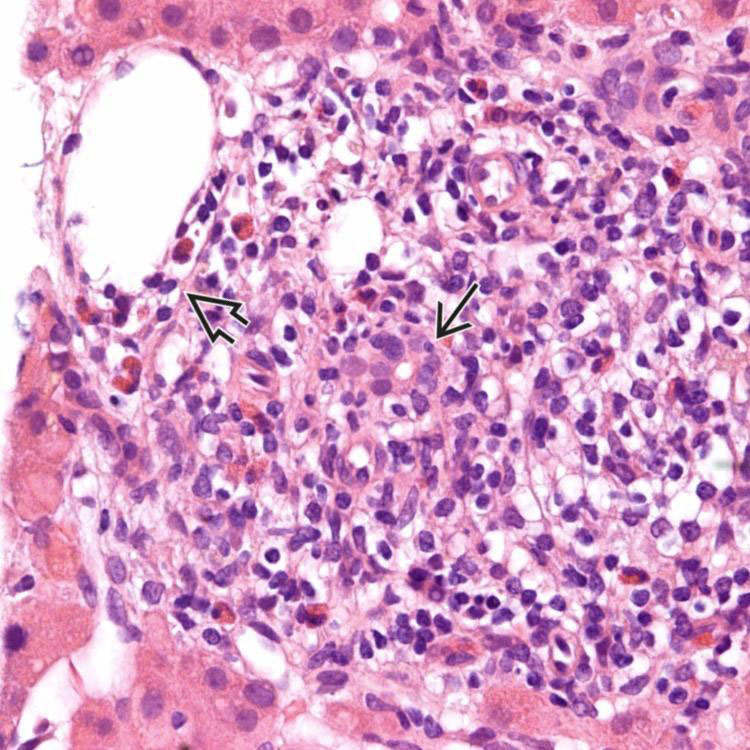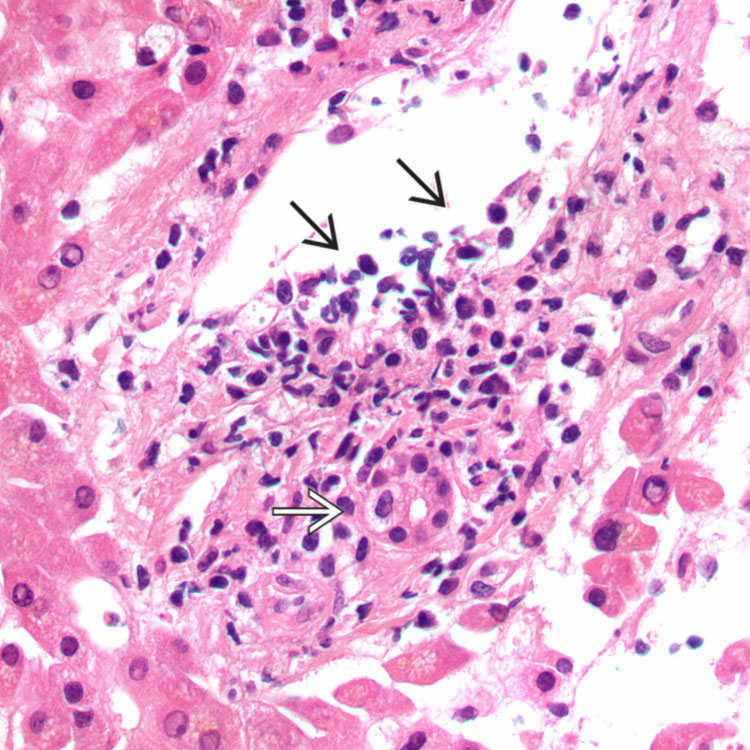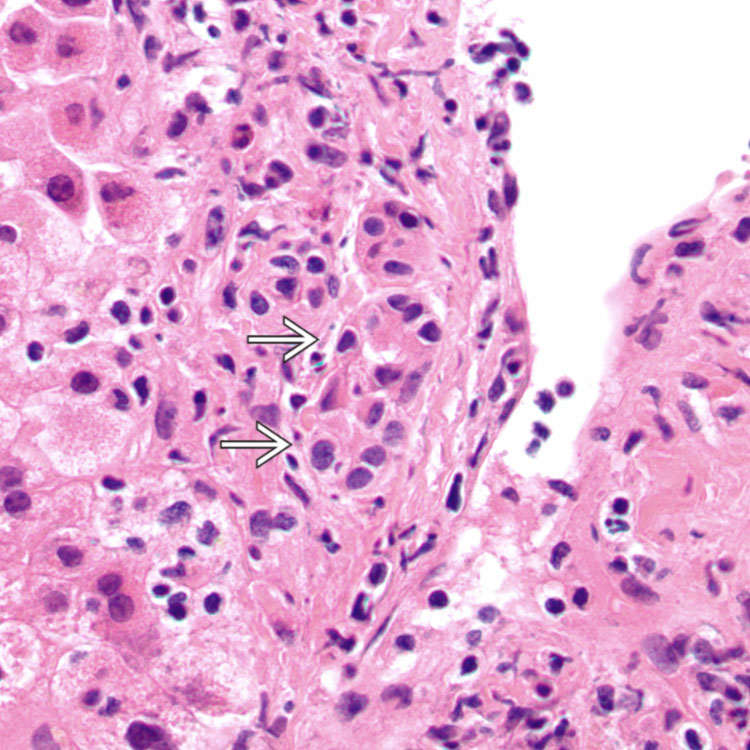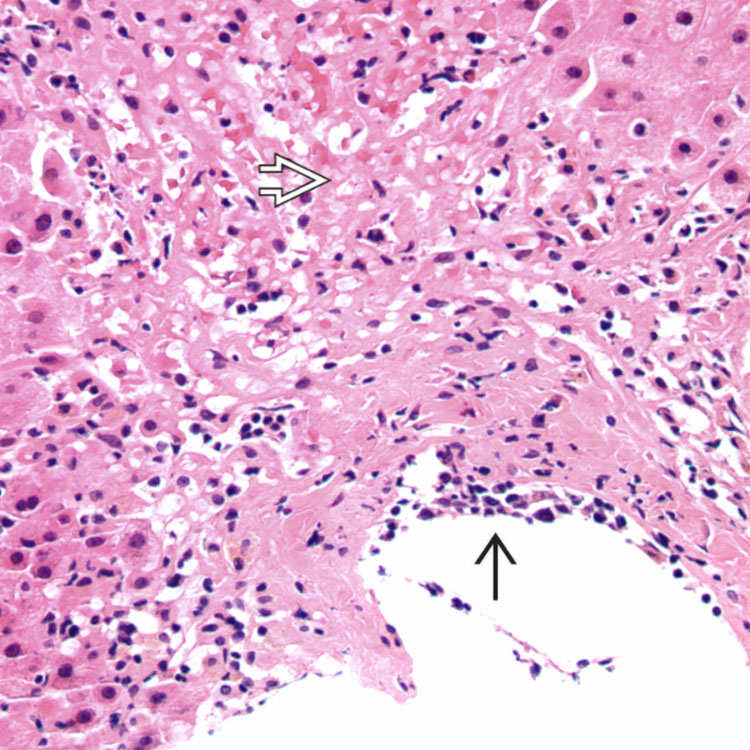Enlarged, activated, or blastic T lymphocytes, eosinophils, and other inflammatory cells
Top Differential Diagnoses

This portal tract contains a mixed inflammatory infiltrate with activated lymphocytes, eosinophils, and plasma cells. The bile duct shows lymphocytic cholangitis and epithelial disarray
 . The portal venule contains endotheliitis
. The portal venule contains endotheliitis  .
.
Endotheliitis
 is present in a portal vein branch, characterized by inflammatory cells undermining the endothelium and lifting it up. The portal tract also contains a mild inflammatory cell infiltrate, and there is mild bile duct damage
is present in a portal vein branch, characterized by inflammatory cells undermining the endothelium and lifting it up. The portal tract also contains a mild inflammatory cell infiltrate, and there is mild bile duct damage  .
.
Bile duct damage
 is seen in a case of acute cellular rejection. The bile duct epithelial cells show nuclear hyperchromasia, pleomorphism, uneven spacing of nuclei, and loss of polarity. The portal tract also contains a mixed inflammatory cell infiltrate.
is seen in a case of acute cellular rejection. The bile duct epithelial cells show nuclear hyperchromasia, pleomorphism, uneven spacing of nuclei, and loss of polarity. The portal tract also contains a mixed inflammatory cell infiltrate.CLINICAL ISSUES
Epidemiology
• Incidence




– More frequent in younger, healthier recipients and with older donors, long cold ischemia time, and immune dysregulation of recipient
Stay updated, free articles. Join our Telegram channel

Full access? Get Clinical Tree





 affects a terminal hepatic vein. There is also perivenular hepatocyte necrosis
affects a terminal hepatic vein. There is also perivenular hepatocyte necrosis  in this case of severe acute rejection.
in this case of severe acute rejection.

